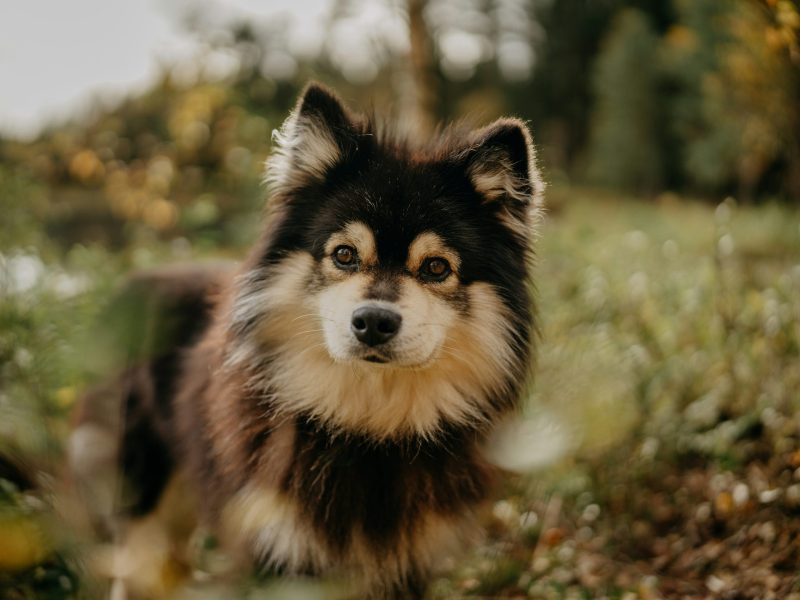
Long, long before written records were kept on dogs, the Finnish Lapphund was helpmate to the sami-people called the Sami who live in Lapland, the northern region of Finland, Sweden, and in part, Russia. In fact, the breed’s ancestry, which almost certainly dates back thousands of years is likely to have descended from spitz type dog native these regions. We know of their antiquity not just from archeological digs in Lapland (unearthed remains of Lapponian dogs were guessed at being as old as 7000 BC), but from the existence of old cave drawings depicting dogs resembling the Lapphund, as well.
The Sami referred to these dogs as Lapinkoira, or Soumenlapinkoira, and bred them to guard their property and their stock, keep the herds together, hunt, and, in recent centuries, herd semi-domesticated reindeer, a major concern since these animals often merged with larger herd of wild reindeers.
We digress for a moment to mention that Finland was part of Sweden for almost 700 years. We don’t mean to cavalierly dismiss the period of history that happened before the 19th century, but there is a lot of it, and space doesn’t allow us to share it all. We fast forward, then, to a moment in the 19th century when Finland and Sweden separated and formed boundaries. Of interest to us is that both countries considered this breed as their own. Some experts believe that this is why there is a Finnish Lapphund and a Swedish Lapphund.
That aside, modernization came to even remote areas of both countries, and it was not a friend to the breed. Railroads brought contact with the outside world, and foreign dogs soon made their way to Sami territory bringing with them diseases for which the Lapphund had no immunity. At the end of WWII, a series of major outbreaks of distemper broke out and killed the dogs at such a rapid rate that many experts feared the breed would die out entirely. Coupled with the introduction of snowmobiles which made the dogs less necessary, and the future looked grim for the breed.
Luckily, Swedish and Finnish dog breeders became keenly interested in these breeds, and sought to standardize them. In 1960, the various Finnish canine organizations merged into one club, the Finnish Kennel Club. This resulted in a formal definition of the two breeds, and the longer coated Finnish Lapphund received a unified standard. The breed was called the Lapinkoira, Finnish for Lapp Dog. The Finnish Lapphund’s standard was changed in 1975 to comply with FCI standards, and again in 1993 for the same reason. In 1993, the breed’s name was officially changed to the Suomenlapinkoira, or Finnish Lapphund to better distinguish it from the Swedish Lapphund.
As for its introduction to the United States, the first Lapphunds probably came in the 1960’s with Scandinavian immigrants. The breed didn’t secure a strong foothold, however, until the 1980’s, and indeed, the first known litter of Finnish Lapphunds born in America came in 1988.
The United Kennel Club granted full recognition to the Finnish Lapphund in 1994, and by the end of that decade, there were enough Finnish Lapphund fanciers in the US to form the Finnish Lapphund Club of America. The Finnish Lapphund was entered into the AKC’s Foundation Stock Service in 2001, and full recognition came in 2011. Acceptance came a bit later in the UK as the breed wasn’t introduced there until 1989, and in Australia and Canada, the first dogs came in 1995.
Photo by Janko Ferlič on Unsplash
